Restoration Work Advances
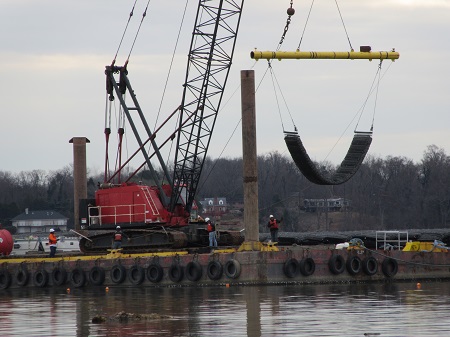 A crane lifts a marine mattress off the barge. Photo by Glenda Booth
A crane lifts a marine mattress off the barge. Photo by Glenda Booth
In early January 2019, the Dyke Marsh restoration breakwater became more and more visible as crews from Coastal Design and Construction continued to install 50 to 55 “marine mattresses” each working day. By January 8, they had placed 2,900 in the south marsh. On January 9, crews on a work barge and a rock barge began putting armor stone on top of the mattresses near the shoreline. A surveyor on the shoreline monitors the tide level and helps ensure that the mattresses are placed at the right elevation.
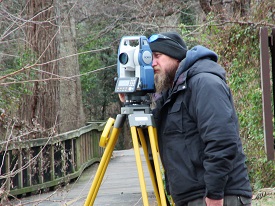 Matthew Younkins, the surveyor on the shoreline, reads the tide gauge and makes sure the mattresses are positioned right.The breakwater is the first stage of Dyke Marsh restoration. U.S. Geological Survey and National Park Service (NPS) experts concluded that a breakwater in the southern marsh should be the top restoration priority. A promontory removed by the dredgers between 1940 and 1972 altered the hydrology of the marsh and Dyke Marsh will be gone by 2035 without action. The breakwater is intended to replicate the former promontory. The breakwater would “redirect erosive flows in the marsh, particularly during strong storms and would re-establish hydrologic conditions that would encourage sediment accretion,” says the NPS 2014 plan.
Matthew Younkins, the surveyor on the shoreline, reads the tide gauge and makes sure the mattresses are positioned right.The breakwater is the first stage of Dyke Marsh restoration. U.S. Geological Survey and National Park Service (NPS) experts concluded that a breakwater in the southern marsh should be the top restoration priority. A promontory removed by the dredgers between 1940 and 1972 altered the hydrology of the marsh and Dyke Marsh will be gone by 2035 without action. The breakwater is intended to replicate the former promontory. The breakwater would “redirect erosive flows in the marsh, particularly during strong storms and would re-establish hydrologic conditions that would encourage sediment accretion,” says the NPS 2014 plan.
Photos contributed by Glenda Booth.
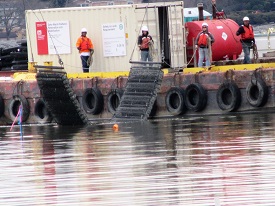 A crane lowers the mattress into the water. A crane lowers the mattress into the water. |
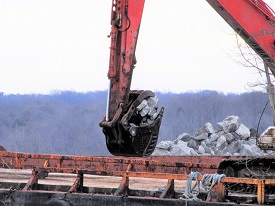 Operators of a construction crane scoop up armor stone from a barge and place it on top of the marine mattresses. Operators of a construction crane scoop up armor stone from a barge and place it on top of the marine mattresses. |
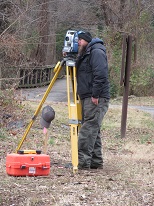 During breaks, Younkins studies the bald eagle pair perched every morning on a Dyke Marsh island. During breaks, Younkins studies the bald eagle pair perched every morning on a Dyke Marsh island. |
 Matthew Younkins photographed a red-tailed hawk through his surveying instrument. Matthew Younkins photographed a red-tailed hawk through his surveying instrument. |
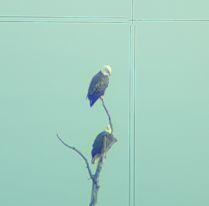 Matthew Younkins photographed the eagles through his surveying instrument. Matthew Younkins photographed the eagles through his surveying instrument. |
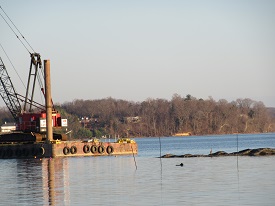 The emerging breakwater is visible at low tide, a perfect spot for a great blue heron to await unsuspecting prey. The emerging breakwater is visible at low tide, a perfect spot for a great blue heron to await unsuspecting prey. |

 Friends of Dyke Marsh, Inc. is a non-profit 501(c)(3) organization.
Friends of Dyke Marsh, Inc. is a non-profit 501(c)(3) organization.